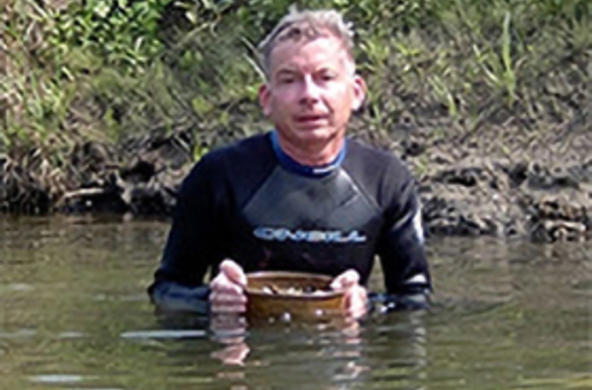Small, autonomous airboats masquerading as crocodiles gathered data on hippo hygiene and water quality this spring in Kenya.
No human would dare venture into the brown water where hippos slosh around. But the animals — among Africa's most dangerous — tolerated the boats developed at Carnegie Mellon University's Robotics Institute and operated by CMU spinoff Platypus LLC.
One did give chase, but briefly.
"Those were 30 seconds that none of us will forget," said Paul Scerri, an associate research professor in CMU's Robotics Institute and president of Platypus.
In the end, the 13-pound boat managed to outrun the 2-ton hippo.
An estimated 4,000 hippos use the Mara River as a toilet with potentially deadly effects for fish living downriver.
The airboats skimmed over the surface of several hippopotamus pools in the river, where they scanned the river bottom for deposits of hippo dung and made various measurements of water quality.
They supported the work of researchers Amanda Subalusky, Christopher Dutton, and David Post of Yale University, and Emma Rosi-Marshall from the Cary Institute of Ecosystem Studies, who have been studying water quality on the Mara since 2008. The team suspects that hippos, which spend their nights grazing in the savanna grasslands and their days wallowing and defecating in the river, are responsible for water quality problems, particularly during periods of low flow.
Subalusky said when the river is running high, this dung moves down river, but during low flows the dung settles to the bottom of hippo pools, where bacteria feed on it and consume lots of oxygen. During subsequent high flows, oxygen levels downriver crash and fish kills can occur. She and Dutton suspect this is because hippo feces are being flushed from the hippo pools.
The problem is, they haven't been able to get close enough to find out.
"Hippos are very territorial and aggressive and have been known to attack boats," Subalusky explained. "We have to work with armed rangers when we get in the river anywhere, but we would never be able to get into a hippo pool."
A mentor connected them with Scerri, who arranged for Christopher Tomaszewski, Abhinav Valada and John Scerri of Platypus to take three of the boats to Kenya in March. The boats use Android smartphones for onboard computing and are designed to navigate autonomously, working alone or in groups to perform water monitoring in bodies of water or aid first responders following floods.
"It's a different sort of scientific process in the field there," said Paul Scerri, who visited the project. "You go where you can and do what you can."
Sonar sensors aboard the boats were used to create depth maps of the pools and to measure the depth of the fecal deposits, while other sensors checked such water quality parameters as water temperature, oxygen content and electrical conductivity.
The data are still being analyzed and are unpublished, so the researchers can't draw any conclusions yet.
The boats were disguised as crocodiles at the suggestion of a local Maasai guide and, with the one exception, the hippos seemed unfazed by the presence of the strange machines.
The boat deployment was sponsored in part by Project Olympus. Subalusky, Dutton, Post, and Rosi-Marshall are supported by the National Geographic Society, Switzer Fellowship, World Wildlife Fund, National Science Foundation and Yale.






